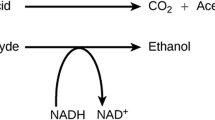Abstract
The sole purpose of the use of food flavourings is to make a finished product more appealing. There are five main reasons for using flavourings:
-
1.
The process involved in the production of the food product may necessitate the addition of flavours. For example, because of the loss of flavour due to heating while baking or the lack of the roast note in microwave cooking.
-
2.
The availability of a natural flavouring ingredient may be unreliable thus necessitating the use of flavours. Poor weather conditions can drastically reduce crop yields for example.
-
3.
Economic factors may restrict the use of natural materials. This could be due to the cost of the natural material itself as in the case of maple syrup.
-
4.
The form of the natural material may not permit it to be used in the finished product. Ginger roots cannot be used as such to produce a beverage but must be extracted for use by a soft drink bottler.
-
5.
The potency of the natural material may be such that it cannot be used practically in the finished product. Flavouring confectionery or baked goods is not practical using fruits or fruit juices alone.
Access this chapter
Tax calculation will be finalised at checkout
Purchases are for personal use only
Preview
Unable to display preview. Download preview PDF.
Similar content being viewed by others
Further reading
Arctander, S. (1960) Perfume and Flavour Materials of Natural Origin. S. Arctander, Elizabeth, N. J.
Fenaroli, G. (1975) Handbook of Flavour Ingredients, CRC Press, Cleveland, Ohio.
Givaudan (1989) A Short Introduction to Flavours by Givaudan. Givaudan Dubendorf Ltd, Switzerland.
Guenther, E. (1948) The Essential Oils. Van Nostrand, New York.
Merory, J. (1968) Food Flavourings — Composition Manufacture and Use. AVI Publishing, Westport, Conn.
Ockerman, H. (1978) Source Book For Food Scientists. AVI Publishing, Westport, Conn.
Tressler, D. and Sultan, W. (1975) Food Products Formulary. AVI Publishing, Westport, Conn.
Editor information
Editors and Affiliations
Rights and permissions
Copyright information
© 1991 Springer Science+Business Media New York
About this chapter
Cite this chapter
Gordon, R.J. (1991). Flavourings. In: Smith, J. (eds) Food Additive User’s Handbook. Springer, Boston, MA. https://doi.org/10.1007/978-1-4757-5247-2_3
Download citation
DOI: https://doi.org/10.1007/978-1-4757-5247-2_3
Publisher Name: Springer, Boston, MA
Print ISBN: 978-1-4757-5249-6
Online ISBN: 978-1-4757-5247-2
eBook Packages: Springer Book Archive




